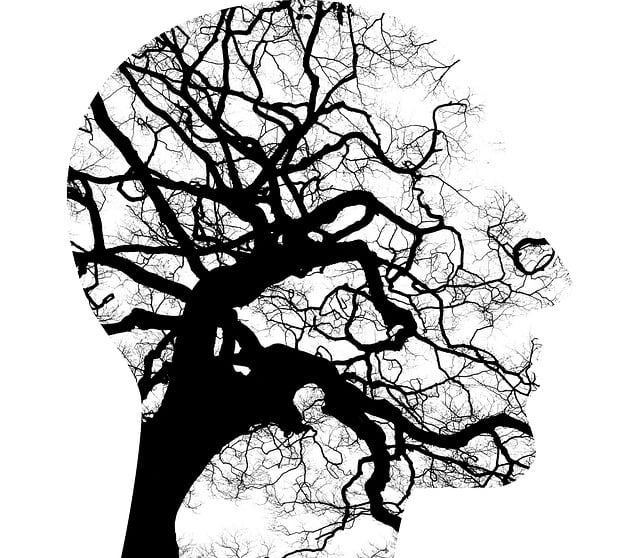Stress Management Workshops: Healing Teens with Conduct Disorders
Stress management workshops tailored for adolescents with conduct disorders are a proactive approach…….
In the intricate landscape of adolescent mental health, Conduct Disorder (CD) stands as a complex challenge, particularly when it manifests in teens. This disorder, characterized by persistent patterns of aggressive behavior, violations of social rules, and impulsivity, demands tailored interventions to foster positive growth and development. Enter “Therapy for Adolescent Teens Conduct Disorder,” a specialized approach designed to address the unique needs of this demographic. This article delves into the intricacies of this therapeutic realm, exploring its definition, global impact, economic considerations, technological advancements, policy framework, challenges, successful case studies, and future prospects. By the end, readers will gain a profound understanding of why this therapy is not just a treatment but a transformative journey towards a brighter future for adolescent teens grappling with CD.
Therapy for Adolescent Teens Conduct Disorder is a structured therapeutic process tailored to help individuals aged 10-17 who exhibit symptoms of Conduct Disorder. It involves a multifaceted approach combining elements from various evidence-based practices, including cognitive-behavioral therapy (CBT), dialectical behavior therapy (DBT), and family-focused interventions. The core components typically include:
The concept of treating Conduct Disorder in adolescents has evolved over the years, reflecting a deeper understanding of this complex condition. Historically, approaches often involved punitive measures, but these have been superseded by evidence-based therapies that focus on understanding and addressing underlying causes. This shift is significant as it moves away from merely punishing problematic behaviors to empowering teens with skills for positive change.
The significance of specialized therapy lies in its ability to:
“Therapy for Adolescent Teens Conduct Disorder” is a global concern, with its impact extending across diverse cultures and regions. The World Health Organization (WHO) estimates that CD affects approximately 1-2% of children and adolescents worldwide, highlighting the universal need for specialized interventions.
The trajectory of this therapy varies across regions:
The global market for adolescent mental health services, including therapy for CD, is growing. Factors driving this growth include increasing awareness, rising prevalence of mental health disorders, and government initiatives to enhance youth well-being. The demand for evidence-based, specialized therapies further propels this market.
Private investors, non-profit organizations, and government agencies are key contributors to funding therapy programs. Grants, partnerships, and public-private collaborations drive the development of innovative treatment models. For instance, the US National Institute of Mental Health (NIMH) funds research and initiatives focused on CD, contributing significantly to global knowledge and practice.
Investing in therapy for Adolescent Teens Conduct Disorder offers substantial economic benefits:
The digital age has brought about innovative solutions for delivering therapy to adolescent teens with CD. Online platforms and mobile apps offer:
Telehealth has revolutionized therapy delivery, making it possible to reach teens in remote areas or those who prefer more discrete services. This approach:
VR technology offers immersive experiences designed to help teens confront and manage their behaviors in safe, simulated environments. Applications include:
Global policies governing therapy for Adolescent Teens Conduct Disorder include:
Legislation plays a crucial role in:
Despite its potential, “Therapy for Adolescent Teens Conduct Disorder” faces several challenges:
Addressing these issues requires strategic actions:
A Scandinavian country implemented a school-based CBT program for adolescents with CD. This initiative involved training teachers to recognize and support students’ emotional needs, alongside individual therapy sessions. Results showed significant reductions in aggressive behavior and improvements in academic performance. The success lies in the integrated approach, combining teacher involvement with targeted therapy.
A community mental health center adopted a family-focused DBT program for teens with CD. This model engaged both the teen and their family in therapy, teaching skills to manage emotions, communicate effectively, and resolve conflicts. The program’s success led to system-wide adoption, demonstrating the power of family involvement in treatment.
An Australian startup developed a digital platform offering personalized therapy for teens with CD. Using AI algorithms, the platform adapts content based on user progress. Initial trials showed improved engagement and positive behavior changes among participants. This case highlights the potential of digital tools in expanding access to effective therapy.
The future of “Therapy for Adolescent Teens Conduct Disorder” is promising, with several emerging trends:
Focus areas include:
To capitalize on these prospects, stakeholders should:
“Therapy for Adolescent Teens Conduct Disorder” represents a holistic approach to addressing a complex challenge in adolescent mental health. By combining evidence-based practices, technological innovations, and policy frameworks, this field offers transformative possibilities for teens struggling with CD. As we look ahead, continued research, cultural sensitivity, and collaborative efforts will be pivotal in shaping a brighter future for these young individuals.
Q: What are the signs of Conduct Disorder in adolescents?
A: Symptoms include aggressive behavior (physical or verbal), destruction of property, lying or stealing, serious violations of rules, and lack of empathy or guilt.
Q: How does therapy differ for teenage girls with CD compared to boys?
A: While the core components remain similar, therapists may adapt approaches based on gender differences in presentation and social norms. Girls might express aggression indirectly, focusing more on interpersonal conflicts.
Q: Can digital therapy replace traditional face-to-face therapy?
A: Digital therapy is a powerful tool, offering accessibility and convenience. However, it complements traditional therapy by providing additional support and engaging teens in their own care. Face-to-face interactions remain crucial for building therapeutic alliances and addressing complex issues.
Q: What role do parents play in their teen’s therapy for CD?
A: Parents are integral to the process. They learn skills to support their teen’s recovery, provide consistent practice between sessions, and offer ongoing encouragement and understanding. Family involvement enhances treatment outcomes.
Q: How can I find evidence-based therapy programs for my teenager with CD?
A: Start by consulting your healthcare provider or local mental health clinics. Government websites and non-profit organizations often list reputable programs. Researching and comparing approaches based on evidence is essential to making informed decisions.

Stress management workshops tailored for adolescents with conduct disorders are a proactive approach…….

Stress management workshops tailored for adolescents, addressing academic pressures, peer dynamics,…….